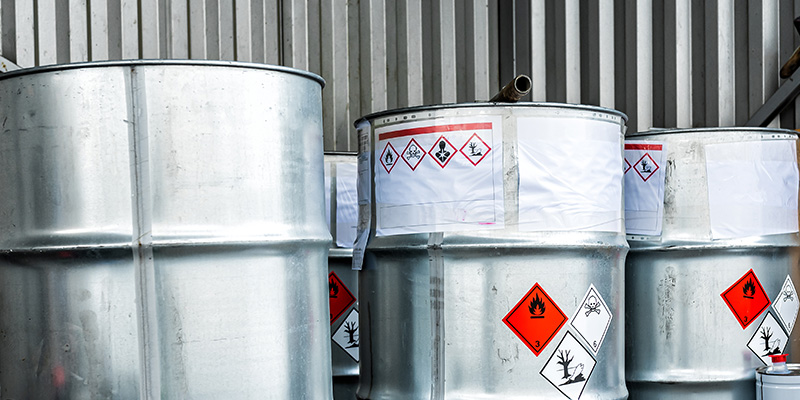Environmental Consulting
Facility Response Plans (FRP)
Driven by the critical need for environmental safety, our Facility Response Plan services, underpinned by the Clean Water Act and Oil Pollution Act, ensure facilities using or storing oil are primed for worst-case discharge scenarios.
We specialize in FRP preparation, review, and execution, reinforcing your commitment to environmental stewardship.
Trinity Consultants has been providing these expert FRP services since its inception:
- Plan preparation
- Plan review
- Plan execution (employee training, inspection, monitoring)
- Compliance audits
How Else We Can Help
Related Services

Spill Prevention, Control, and Countermeasure Plan (SPCC)
Trinity has the expertise to develop SPCC Plans across numerous industrial facilities and can assist with plan revisions and program audits.
PHA and Risk Assessments
Trinity Process Hazard Analysis (PHA) experts have extensive experience with hazard identification, evaluation, and mitigation services.
Health Risk Assessment
Trinity is the industry leader in air dispersion modeling studies, population exposure assessments, health risk characterizations, ambient monitoring and related air toxics work.
Waste Compliance Support
Trinity experts provide assistance and guidance to ensure adherence to regulations and standards regarding the handling, storage, treatment, and disposal of waste materials.Our Results
Featured Projects

Trinity’s Technical RCRA Expertise Supports Streamlined Permitting
Our RCRA specialists help companies facing challenges with the extensive documentation and intricate details required for Part A and Part B permitting.
A Global Chemicals Company Integrates for HSE Compliance Visibility
A long-time Trinity client engaged the air and Digital Solutions teams to support permitting and software installation needs.
Refinery Enhances BWON Compliance Program
A large petroleum refinery subject to BWON controls engaged Trinity to ensure that the site was in compliance with BWON regulations and was prepared for an eventual U.S. EPA inspection.
Power Company Partners with Trinity to Modernize Compliance using Enablon Platform
Starting in 2017, a leading international power generating company tasked Trinity Consultants’ Digital Solutions team with spearheading an Environment, Health, and Safety (EHS) compliance management system modernization program.Regulatory Background
Facility Response Plans Overview
What is the FRP Rule?
Under the Clean Water Act (CWA) as amended by the Oil Pollution Act (OPA), certain facilities that store and use oil are required to prepare and submit a Facility Response Plan (FRP). An FRP demonstrates a facility's preparedness to respond to a worst-case oil discharge and must be consistent with the National Contingency Plan and applicable Area Contingency Plans. FRP requirements are specified in the SPCC rule in 40 CFR 112.
Does your facility need an FRP?
Facilities that could reasonably be expected to cause “substantial harm” to the environment by discharging oil into or on navigable waters are required to prepare and submit an FRP to the US EPA for review. A facility may pose “substantial harm” according to the FRP rule if it:
- Has a total oil storage capacity greater than or equal to 42,000 gallons and it transfers oil over water to/from vessels, or
- Has a total oil storage capacity greater than or equal to 1,000,000 gallons and meets one of the following conditions:
- Does not have sufficient secondary containment for each aboveground storage area including adequate freeboard for precipitation
- Is located such that a discharge from the facility could cause injury to fish and wildlife and sensitive environments
- Is located such that a discharge from the facility would shut down a public drinking water intake
- Has had, within the past 5 years, a reportable discharge greater than or equal to 10,000-gallons
Scope and Timelines
What should be in an FRP?
The key elements in an FRP include the following:
- Emergency Response Action Plan
- Facility information
- Emergency notification, equipment, personnel, and evacuation information
- Hazard evaluation, vulnerability analysis, and spill history
- Discussion of small, medium, and worst-case discharge scenarios and response actions
- Description of discharge detection procedures and equipment
- Detailed implementation plan for responses, containment, and disposal
- Description and records of self-inspection, drills and exercises, and response training
- Diagrams of facility site plan, drainage, and evacuation plan
- Security (e.g., fences, lighting, alarms, guards, emergency cut-off valves and locks, etc.)
Important Dates / Deadlines
An existing facility that will be subject to FRP requirements must submit the plan before commencing operation of the portion of the facility undergoing any change that causes it to exceed either the 42,000 or 1,000,000-gallon thresholds. A new facility that will be subject to FRP requirements must submit the plan before commencing operation. FRP plans must be periodically updated.
Meet the Team
